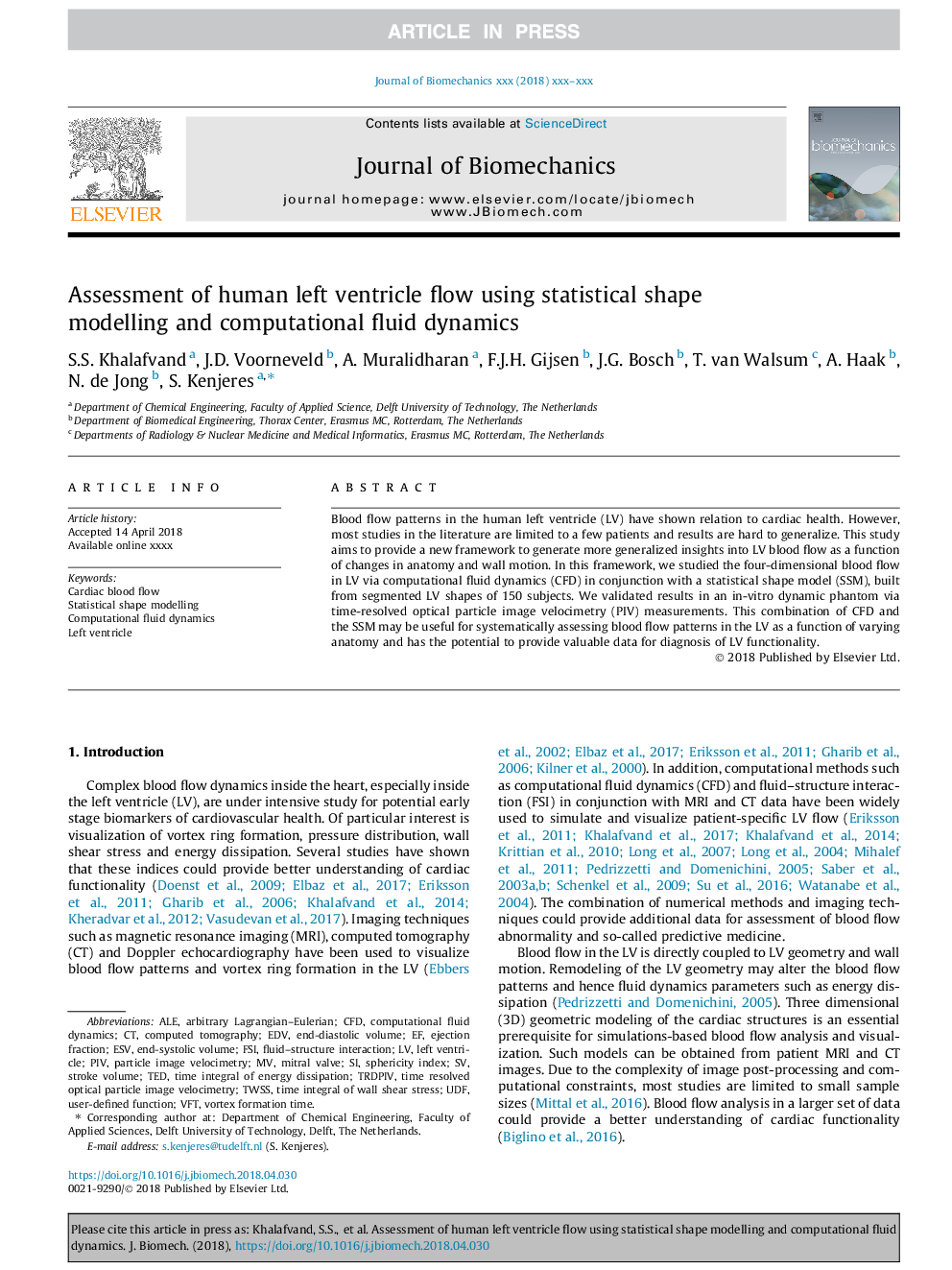| Article ID | Journal | Published Year | Pages | File Type |
|---|---|---|---|---|
| 7235980 | Journal of Biomechanics | 2018 | 10 Pages |
Abstract
Blood flow patterns in the human left ventricle (LV) have shown relation to cardiac health. However, most studies in the literature are limited to a few patients and results are hard to generalize. This study aims to provide a new framework to generate more generalized insights into LV blood flow as a function of changes in anatomy and wall motion. In this framework, we studied the four-dimensional blood flow in LV via computational fluid dynamics (CFD) in conjunction with a statistical shape model (SSM), built from segmented LV shapes of 150 subjects. We validated results in an in-vitro dynamic phantom via time-resolved optical particle image velocimetry (PIV) measurements. This combination of CFD and the SSM may be useful for systematically assessing blood flow patterns in the LV as a function of varying anatomy and has the potential to provide valuable data for diagnosis of LV functionality.
Keywords
TEDVFTPIVUDFESVFSIUser-defined functionEDVALEleft ventricleFluid–structure interactioncomputed tomographyEnd-diastolic volumeend-systolic volumestroke volumemitral valveCFDComputational fluid dynamicsvortex formation timeParticle image velocimetrysphericity indexArbitrary Lagrangian–EulerianStatistical Shape Modellingejection fraction
Related Topics
Physical Sciences and Engineering
Engineering
Biomedical Engineering
Authors
S.S. Khalafvand, J.D. Voorneveld, A. Muralidharan, F.J.H. Gijsen, J.G. Bosch, T. van Walsum, A. Haak, N. de Jong, S. Kenjeres,
